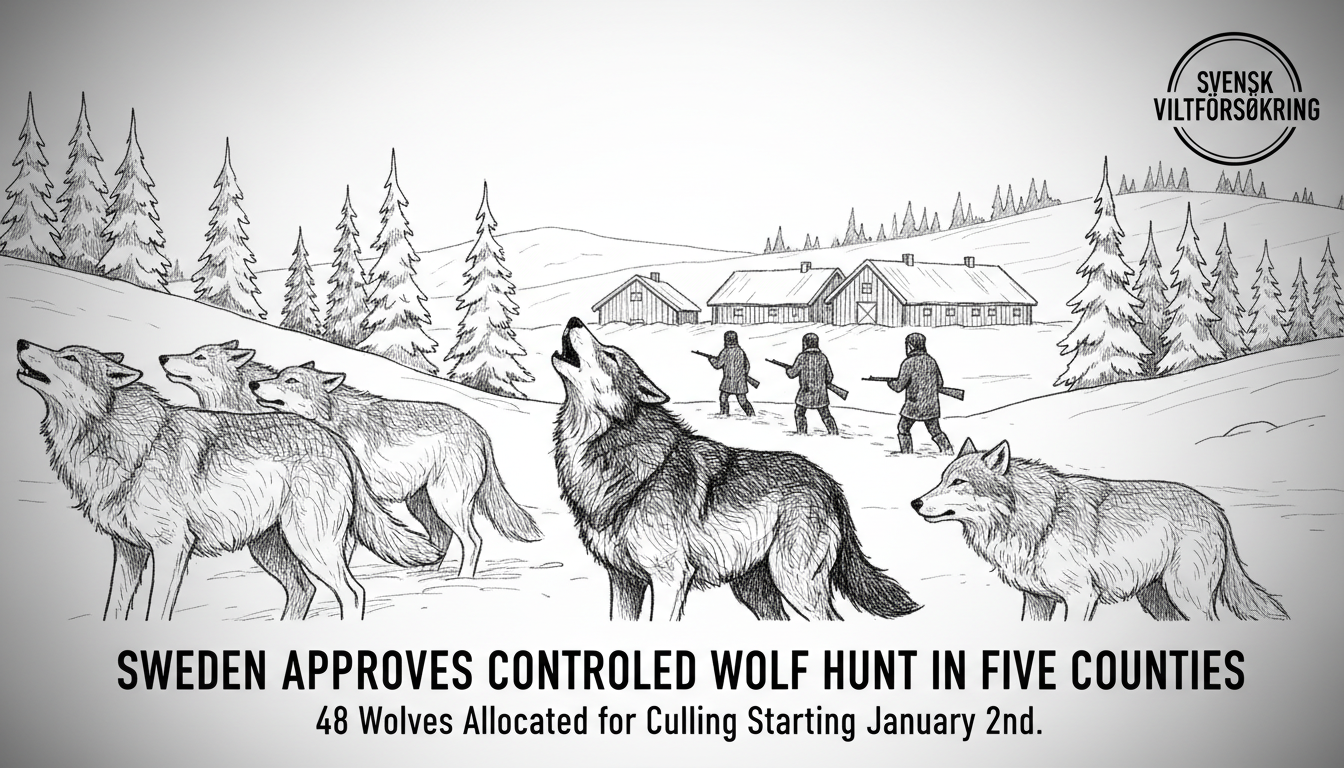Swedish authorities have authorized the culling of 48 wolves across five counties during the licensed hunting season starting January 2. The hunt will continue until county administrative boards cancel the permits or until February 15 at the latest. This represents a substantial increase from last winter's quota of 30 wolves, when hunters successfully eliminated 25 animals.
Örebro County receives the largest allocation with 18 wolves designated for removal. Södermanland follows with 12 animals, while Västmanland, Dalarna, and Västra Götaland counties each have quotas of six wolves. Notably, Värmland will not participate in this winter's hunting program despite being part of previous wildlife management initiatives.
County officials describe the population reduction as a gradual and controlled process. Their management plan aims to decrease Sweden's wolf population to approximately 270 animals following the current hunting season. This approach reflects ongoing tensions between conservation efforts and livestock protection concerns in rural communities.
Sweden's wolf management policy remains controversial among environmental groups and hunting communities. The European Union's Habitats Directive requires member states to maintain favorable conservation status for protected species like wolves. Yet Swedish authorities argue controlled hunting helps prevent genetic inbreeding and reduces conflicts with farmers.
The increasing quota suggests authorities are responding to growing pressure from rural constituencies where wolf predation on livestock has become more frequent. Meanwhile, conservation organizations continue monitoring population trends closely, concerned that repeated licensed hunts might threaten long-term viability of Scandinavia's wolf population.
International observers note that Sweden's approach contrasts with neighboring Norway's more restrictive wolf management policies. This difference highlights ongoing debates across Scandinavia about balancing large carnivore conservation with rural economic interests.
What does this mean for Sweden's ecosystem management? The gradual increase in hunting quotas indicates shifting political priorities toward addressing farmers' concerns. Yet scientists warn that removing too many apex predators could disrupt ecological balance in Sweden's boreal forests.
The coming months will reveal whether this management strategy achieves its dual objectives of maintaining viable wolf populations while reducing human-wildlife conflicts. Both outcomes will influence future wildlife policy across the Nordic region.

